IoT-Based Systems for Soil Nutrients Assessment in Horticulture
Abstract
1. Introduction
2. Techniques and Technologies for Soil Fertility Characterization
3. Information System for Soil Nutrients Assessment
4. IoT-Based System for Soil Nutrient Assessment
4.1. Smart Sensor Nodes
4.2. Embedded Software
4.3. Mobile App
4.4. Experimental Protocol
5. Results
6. Discussion
7. Conclusions
Author Contributions
Funding
Institutional Review Board Statement
Informed Consent Statement
Data Availability Statement
Conflicts of Interest
References
- Farm to Fork Strategy. Available online: https://food.ec.europa.eu/horizontal-topics/farm-fork-strategy_en (accessed on 17 December 2022).
- Liliane, T.N.; Charles, M.S.; Liliane, T.N.; Charles, M.S. Factors Affecting Yield of Crops; IntechOpen: London, UK, 2020; ISBN 978-1-83881-223-2. [Google Scholar]
- de Oliveira, R.A.; Ramos, M.M.; de Aquino, L.A. Irrigation Management. Sugarcane Agric. Prod. Bioenergy Ethanol 2015, 161–183. [Google Scholar] [CrossRef]
- Horticulture | Definition, Types, Techniques, & Uses | Britannica. Available online: https://www.britannica.com/science/horticulture (accessed on 17 December 2022).
- Boston, 677 Huntington Avenue; Ma 02115 +1495-1000 Healthy Eating Plate. Available online: https://www.hsph.harvard.edu/nutritionsource/healthy-eating-plate/ (accessed on 17 December 2022).
- Melo, A.; Pinto, E.; Aguiar, A.; Mansilha, C.; Pinho, O.; Ferreira, I.M.P.L.V.O. Impact of Intensive Horticulture Practices on Groundwater Content of Nitrates, Sodium, Potassium, and Pesticides. Environ. Monit. Assess. 2012, 184, 4539–4551. [Google Scholar] [CrossRef] [PubMed]
- Breś, W.; Politycka, B.; Breś, W.; Politycka, B. Contamination of Soils and Substrates in Horticulture; IntechOpen: London, UK, 2016; ISBN 978-953-51-2816-8. [Google Scholar]
- Sanyal, S.; Majumdar, K.; Singh, V. K Nutrient Management in Indian Agriculture with Special Reference to Nutrient Mining—A Relook. J. Indian Soc. Soil Sci. 2014, 62, 307–325. [Google Scholar]
- Ghutke, P.; Agrawal, R.; Ghutke, P.; Agrawal, R. An IoT-Based Immersive Approach to Sustainable Farming; IntechOpen: London, UK, 2022; ISBN 978-1-80356-210-0. [Google Scholar]
- Lu, Y.; Liu, M.; Li, C.; Liu, X.; Cao, C.; Li, X.; Kan, Z. Precision Fertilization and Irrigation: Progress and Applications. AgriEngineering 2022, 4, 626–655. [Google Scholar] [CrossRef]
- Fernández, J.; Chartzoulakis, K.; Grant, O.; Lemeur, R.; Steppe, K.; Marsal, J.; Xiloyannis, C. Water Shortage and Efficient Water Use in Horticulture. Acta Hortic. 2009, 817, 363–366. [Google Scholar] [CrossRef]
- Country Guidelines and Technical Specifications for Global Soil Nutrient and Nutrient Budget Maps; FAO: Rome, Italy, 2022; ISBN 978-92-5-136795-7.
- Liebig’s Law of Minimums—Earthwise Agriculture. Available online: https://earthwiseagriculture.net/grower-s-toolbox/law-of-minimums (accessed on 17 December 2022).
- Dalal, R.C.; Rao, A.S. Fertility: Evaluation Systems. In Encyclopedia of Soil Science (Rattan Lal); CRC Press: Boca Raton, FL, USA, 2017; pp. 890–893. [Google Scholar]
- Huber, D.; Römheld, V.; Weinmann, M. Relationship between Nutrition, Plant Diseases and Pests. In Marschner’s Mineral Nutrition of Higher Plants; Academic Press: Cambridge, MA, USA, 2012; pp. 283–298. ISBN 978-0-12-384905-2. [Google Scholar]
- Mandal, A.; Dhaliwal, S.S.; Mani, P.K.; Toor, A.S. Chapter 2—Onservation Agricultural Practices under Organic Farming. In Advances in Organic Farming; Meena, V.S., Meena, S.K., Rakshit, A., Stanley, J., Srinivasarao, C., Eds.; Woodhead Publishing: Sawston, UK, 2021; pp. 17–37. ISBN 978-0-12-822358-1. [Google Scholar]
- Tobacco—Nitrogen (N) Deficiency | NC State Extension Publications. Available online: https://content.ces.ncsu.edu/tobacco-nitrogen-deficiency (accessed on 17 December 2022).
- Hou, S.; Wang, T.; Tang, J. Soil Types Extraction Based on MODIS Image. Procedia Environ. Sci. 2011, 10, 2207–2212. [Google Scholar] [CrossRef][Green Version]
- Din, M.; Zheng, W.; Rashid, M.; Wang, S.; Shi, Z. Evaluating Hyperspectral Vegetation Indices for Leaf Area Index Estimation of Oryza Sativa L. at Diverse Phenological Stages. Front. Plant Sci. 2017, 8, 820. [Google Scholar] [CrossRef] [PubMed]
- Zhu, W.; Rezaei, E.E.; Nouri, H.; Yang, T.; Li, B.; Gong, H.; Lyu, Y.; Peng, J.; Sun, Z. Quick Detection of Field-Scale Soil Comprehensive Attributes via the Integration of UAV and Sentinel-2B Remote Sensing Data. Remote Sens. 2021, 13, 4716. [Google Scholar] [CrossRef]
- Soil Testing Methods (Penn State College of Agricultural Sciences). Available online: https://agsci.psu.edu/aasl/soil-testing/methods (accessed on 19 November 2022).
- Kashyap, B.; Kumar, R. Sensing Methodologies in Agriculture for Soil Moisture and Nutrient Monitoring. IEEE Access 2021, 9, 14095–14121. [Google Scholar] [CrossRef]
- Kirkby, E. Chapter 1—Introduction, Definition and Classification of Nutrients. In Marschner’s Mineral Nutrition of Higher Plants, 3rd ed.; Marschner, P., Ed.; Academic Press: San Diego, CA, USA, 2012; pp. 3–5. ISBN 978-0-12-384905-2. [Google Scholar]
- Pilon-Smits, E.A.H.; Quinn, C.F.; Tapken, W.; Malagoli, M.; Schiavon, M. Physiological Functions of Beneficial Elements. Curr. Opin. Plant Biol. 2009, 12, 267–274. [Google Scholar] [CrossRef]
- Nwachuku, N.I. Effects of Temperature and Dinitrophenol on the Uptake of Potassium and Sodium Ions in Ricinus Communis Roots. Planta 1968, 83, 150–160. [Google Scholar] [CrossRef] [PubMed]
- Neumann, G.; Römheld, V. Chapter 14—Rhizosphere Chemistry in Relation to Plant Nutrition. In Marschner’s Mineral Nutrition of Higher Plants, 3rd ed.; Marschner, P., Ed.; Academic Press: San Diego, CA, USA, 2012; pp. 347–368. ISBN 978-0-12-384905-2. [Google Scholar]
- Chapter 19: 2.5. Factors Affecting Ion Uptake by Roots—Marschner’s Mineral Nutrition of Higher Plants. Available online: https://zoboko.com/text/p500w62j/marschners-mineral-nutrition-of-higher-plants/19 (accessed on 19 November 2022).
- Jimenez, A.F.; Cardenas, P.F.; Canales, A.; Jimenez, F.; Portacio, A. A Survey on Intelligent Agents and Multi-Agents for Irrigation Scheduling. Comput. Electron. Agric. 2020, 176, 105474. [Google Scholar] [CrossRef]
- Wahvu, E.P.; Asih, R.R.; Stania, U.R.A.; Novianti, A.E.; Firmaniar, E.; Sarosa, M.; Kusumawardani, M. Implementation of Automatic Watering System and Monitoring of Nutrients for Grape Cultivation. In Proceedings of the 2022 International Conference on Electrical and Information Technology (IEIT), Wuhan, China, 15–16 September 2022; pp. 59–64. [Google Scholar]
- Chithra, V.; Jeyashri, R.; Deepashri, R.; Prathibanandhi, K.; Priya, C. Smart Sprinkler System Using Raspberry Pi. In Proceedings of the 2022 International Conference on Communication, Computing and Internet of Things (IC3IoT), Chennai, India, 10–11 March 2022; pp. 1–5. [Google Scholar]
- Fan, W.; Kam, K.A.; Zhao, H.; Culligan, P.J.; Kymissis, I. An Optical Soil Sensor for NPK Nutrient Detection in Smart Cities. In Proceedings of the 2022 18th International Conference on Intelligent Environments (IE), Biarritz, France, 20–23 June 2022; pp. 1–4. [Google Scholar]
- Liang, J.; Zheng, Y.; Liu, Z. Nanowire-Based Cu Electrode as Electrochemical Sensor for Detection of Nitrate in Water. Sens. Actuators B Chem. 2016, 232, 336–344. [Google Scholar] [CrossRef]
- Regalado, R.G.; Dela Cruz, J.C. Soil PH and Nutrient (Nitrogen, Phosphorus and Potassium) Analyzer Using Colorimetry. In Proceedings of the 2016 IEEE Region 10 Conference (TENCON), Singapore, 22–25 November 2016; pp. 2387–2391. [Google Scholar]
- Masrie, M.; Rosman, M.S.A.; Sam, R.; Janin, Z. Detection of Nitrogen, Phosphorus, and Potassium (NPK) Nutrients of Soil Using Optical Transducer. In Proceedings of the 2017 IEEE 4th International Conference on Smart Instrumentation, Measurement and Application (ICSIMA), Putrajaya, Malaysia, 28–30 November 2017; pp. 1–4. [Google Scholar]
- Ison, J.L.C.; Pedro, J.A.B.S.; Ramizares, J.Z.; Magwili, G.V.; Hortinela, C.C. Precision Agriculture Detecting NPK Level Using a Wireless Sensor Network with Mobile Sensor Nodes. In Proceedings of the 2021 IEEE 13th International Conference on Humanoid, Nanotechnology, Information Technology, Communication and Control, Environment, and Management (HNICEM), Manila, Philippines, 28–30 November 2021; pp. 1–6. [Google Scholar]
- Kachor, A.Y.; Ghodinde, K. Design of Microcontroller Based Agribot for Fertigation and Plantation. In Proceedings of the 2019 International Conference on Intelligent Computing and Control Systems (ICCS), Madurai, India, 15–17 May 2019; pp. 1215–1219. [Google Scholar]
- Kumar, A.K.; Deepika, D.; Ramakrishna, V. Design Of Smart Fertilizer Chain System From Factory To Farmer. In Proceedings of the 2022 19th International Conference on Electrical Engineering, Computing Science and Automatic Control (CCE), Mexico City, Mexico, 9–11 November 2022; pp. 1–5. [Google Scholar]
- Kukreja, G.S.; Bagyaveereswaran, V.; Menon, S.; Agrawal, G. IoT to Inculcate Smart Farming and Soil Nutrient Retention. In Proceedings of the 2021 International Conference on Innovative Computing, Intelligent Communication and Smart Electrical Systems (ICSES), Chennai, India, 24–25 September 2021; pp. 1–9. [Google Scholar]
- Khairnar, H.M.; Kulkarni, S.S. Automated Soil Macro-Nutrient Analyzer Using Embedded Systems. In Proceedings of the 2018 Fourth International Conference on Computing Communication Control and Automation (ICCUBEA), Pune, India, 16–18 August 2018; pp. 1–3. [Google Scholar]
- Fonacier, A.M.A.; Mañaol, R.C.C.; Parillon, R.C.C.; Villena, M.M.; Tan, G.P. Design of a Polychromatic Color Sensor—Based Voltage Comparator Circuit of Soil PH and Nutrient Management Device for Fertilizer Recommendation. In Proceedings of the 2019 IEEE 11th International Conference on Humanoid, Nanotechnology, Information Technology, Communication and Control, Environment, and Management (HNICEM), Laoag, Philippines, 29 November–1 December 2019; pp. 1–6. [Google Scholar]
- Patokar, A.M.; Gohokar, V.V. Automatic Investigation of Micronutrients and Fertilizer Dispense System Using Microcontroller. In Proceedings of the 2018 International Conference on Recent Innovations in Electrical, Electronics & Communication Engineering (ICRIEECE), Bhubaneshwar, India, 27–28 July 2018; pp. 1737–1739. [Google Scholar]
- Kulkarni, N.; Thakur, A.; Rajwal, T.; Tornekar, R.; Patil, S. Smart Soil Nutrients Analysis and Prediction of the Level of Nutrients Using a Bot. In Proceedings of the 2019 3rd International Conference on Recent Developments in Control, Automation & Power Engineering (RDCAPE), Noida, India, 10–11 October 2019; pp. 663–668. [Google Scholar]
- Mahmud, I.; Nafi, N.A. An Approach of Cost-Effective Automatic Irrigation and Soil Testing System. In Proceedings of the 2020 Emerging Technology in Computing, Communication and Electronics (ETCCE), Dhaka, Bangladesh, 21–22 December 2020; pp. 1–5. [Google Scholar]
- Sowmya Sundari, L.K.; Rana, M.; Ahmed, S.T.; Anitha, K. Real-Time IoT Based Temperature and NPK Monitoring System Sugarcane-Crop Yield for Increasing. In Proceedings of the 2021 Innovations in Power and Advanced Computing Technologies (i-PACT), Kuala Lumpur, Malaysia, 27–29 November 2021; pp. 1–5. [Google Scholar]
- Manikandan, P.; Ramesh, G.; Sivakumar, P.; Kumar, J.J.; Krishna, R.L.; Dinesh, G. Soil Nutrients Monitoring and Analyzing System Using Internet of Things. In Proceedings of the 2022 2nd International Conference on Advance Computing and Innovative Technologies in Engineering (ICACITE), Greater Noida, India, 28–29 April 2022; pp. 301–305. [Google Scholar]
- Nath, S.; Dey, A.; Das, P.; Mohapatra, D.; Sing, J.K.; Sarkar, S.K. Application of Soil Sensors for Maximizing Productivity Using IoT Framework. In Proceedings of the 2022 IEEE VLSI Device Circuit and System (VLSI DCS), Kolkata, India, 26–27 February 2022; pp. 220–224. [Google Scholar]
- Madhura, U.K.; Akshay, P.; Bhattad, A.J.; Nagaraja, G.S. Soil Quality Management Using Wireless Sensor Network. In Proceedings of the 2017 2nd International Conference on Computational Systems and Information Technology for Sustainable Solution (CSITSS), Bengaluru, India, 21–23 December 2017; pp. 1–5. [Google Scholar]
- Shivaji, K.V.; Galande, S.G. Real-Time Video Monitoring and Micro-Parameters Measurement Using Sensor Networks for Efficient Farming. In Proceedings of the International Conference for Convergence for Technology-2014, Pune, India, 6–8 April 2014; pp. 1–4. [Google Scholar]
- Shylaja, S.N.; Veena, M.B. Real-Time Monitoring of Soil Nutrient Analysis Using WSN. In Proceedings of the 2017 International Conference on Energy, Communication, Data Analytics and Soft Computing (ICECDS), Chennai, India, 1–2 August 2017; pp. 3059–3062. [Google Scholar]
- Khan, M.I.; Mukherjee, K.; Shoukat, R.; Dong, H. A Review on PH Sensitive Materials for Sensors and Detection Methods. Microsyst. Technol. 2017, 23, 4391–4404. [Google Scholar] [CrossRef]
- Karthikeyan, L.; Chawla, I.; Mishra, A.K. A Review of Remote Sensing Applications in Agriculture for Food Security: Crop Growth and Yield, Irrigation, and Crop Losses. J. Hydrol. 2020, 586, 124905. [Google Scholar] [CrossRef]
- Weiss, M.; Jacob, F.; Duveiller, G. Remote Sensing for Agricultural Applications: A Meta-Review. Remote Sens. Environ. 2020, 236, 111402. [Google Scholar] [CrossRef]
- Dimkpa, C.; Bindraban, P.; McLean, J.E.; Gatere, L.; Singh, U.; Hellums, D. Methods for Rapid Testing of Plant and Soil Nutrients. In Sustainable Agriculture Reviews; Lichtfouse, E., Ed.; Springer International Publishing: Cham, Switzerland, 2017; Volume 25, pp. 1–43. [Google Scholar]
- Blatchford, M.L.; Mannaerts, C.M.; Zeng, Y.; Nouri, H.; Karimi, P. Status of Accuracy in Remotely Sensed and In-Situ Agricultural Water Productivity Estimates: A Review. Remote Sens. Environ. 2019, 234, 111413. [Google Scholar] [CrossRef]
- GISGeography Passive vs Active Sensors in Remote Sensing. Available online: https://gisgeography.com/passive-active-sensors-remote-sensing/ (accessed on 17 December 2022).
- Babaeian, E.; Sadeghi, M.; Jones, S.B.; Montzka, C.; Vereecken, H.; Tuller, M. Ground, Proximal, and Satellite Remote Sensing of Soil Moisture. Rev. Geophys. 2019, 57, 530–616. [Google Scholar] [CrossRef]
- Burgin, M.S.; Colliander, A.; Njoku, E.G.; Chan, S.K.; Cabot, F.; Kerr, Y.H.; Bindlish, R.; Jackson, T.J.; Entekhabi, D.; Yueh, S.H. A Comparative Study of the SMAP Passive Soil Moisture Product With Existing Satellite-Based Soil Moisture Products. IEEE Trans. Geosci. Remote Sens. Publ. IEEE Geosci. Remote Sens. Soc. 2017, 55, 2959–2971. [Google Scholar] [CrossRef]
- Nadal, J.L.V.; Franch, B.; Roger, J.C.; Skakun, S.; Vermote, E.; Justice, C. Spectrally Adjusted Surface Reflectance and Its Dependence with NDVI for Passive Optical Sensors. Int. Geosci. Remote Sens. Symp. IGARSS 2018, 2018, 6452–6455. [Google Scholar] [CrossRef]
- Bhatt, R.; Arora, S.; Chew, C.C. Improving Irrigation Water Productivity Using Tensiometers. J. Soil Water Conserv. 2016, 15, 120–124. [Google Scholar]
- GEOGLAM. Available online: https://www.earthobservations.org/geoglam.php (accessed on 17 December 2022).
- Ghazali, M.F.; Wikantika, K.; Harto, A.B.; Kondoh, A. Generating Soil Salinity, Soil Moisture, Soil PH from Satellite Imagery and Its Analysis. Inf. Process. Agric. 2020, 7, 294–306. [Google Scholar] [CrossRef]
- Mukherjee, A.; Misra, S.; Raghuwanshi, N.S. A Survey of Unmanned Aerial Sensing Solutions in Precision Agriculture. J. Netw. Comput. Appl. 2019, 148, 102461. [Google Scholar] [CrossRef]
- Marques da Silva, J.R.; Damásio, C.V.; Sousa, A.M.O.; Bugalho, L.; Pessanha, L.; Quaresma, P. Agriculture Pest and Disease Risk Maps Considering MSG Satellite Data and Land Surface Temperature. Int. J. Appl. Earth Obs. Geoinform. 2015, 38, 40–50. [Google Scholar] [CrossRef]
- Adan, M.; Abdel-Rahman, E.M.; Gachoki, S.; Muriithi, B.W.; Lattorff, H.M.G.; Kerubo, V.; Landmann, T.; Mohamed, S.A.; Tonnang, H.E.Z.; Dubois, T. Use of Earth Observation Satellite Data to Guide the Implementation of Integrated Pest and Pollinator Management (IPPM) Technologies in an Avocado Production System. Remote Sens. Appl. Soc. Environ. 2021, 23, 100566. [Google Scholar] [CrossRef]
- Onojeghuo, A.O.; Blackburn, G.A.; Huang, J.; Kindred, D.; Huang, W. Applications of Satellite ‘Hyper-Sensing’ in Chinese Agriculture: Challenges and Opportunities. Int. J. Appl. Earth Obs. Geoinform. 2018, 64, 62–86. [Google Scholar] [CrossRef]
- Nakalembe, C.; Becker-Reshef, I.; Bonifacio, R.; Hu, G.; Humber, M.L.; Justice, C.J.; Keniston, J.; Mwangi, K.; Rembold, F.; Shukla, S.; et al. A Review of Satellite-Based Global Agricultural Monitoring Systems Available for Africa. Glob. Food Secur. 2021, 29, 100543. [Google Scholar] [CrossRef]
- Clulow, A.D.; Everson, C.S.; Mengistu, M.G.; Price, J.S.; Nickless, A.; Jewitt, G.P.W. Extending Periodic Eddy Covariance Latent Heat Fluxes through Tree Sap-Flow Measurements to Estimate Long-Term Total Evaporation in a Peat Swamp Forest. Hydrol. Earth Syst. Sci. 2015, 19, 2513–2534. [Google Scholar] [CrossRef]
- Guedes Bezerra, B.; Renato Cortez Bezerra, J.; Barbosa da Silva, B.; Antonio Costa dos Santos, C.; Algodão, E.; Oswaldo Cruz, R. Surface Energy Exchange and Evapotranspiration from Cotton Crop under Full Irrigation Conditions in the Rio Grande Do Norte State, Brazilian Semi-Arid. Bragantia 2015, 74, 120–128. [Google Scholar] [CrossRef][Green Version]
- Jiménez-Carvajal, C.; Ruiz-Peñalver, L.; Vera-Repullo, J.A.; Jiménez-Buendía, M.; Antolino-Merino, A.; Molina-Martínez, J.M. Weighing Lysimetric System for the Determination of the Water Balance during Irrigation in Potted Plants. Agric. Water Manag. 2017, 183, 78–85. [Google Scholar] [CrossRef]
- Moorhead, J.E.; Marek, G.W.; Colaizzi, P.D.; Gowda, P.H.; Evett, S.R.; Brauer, D.K.; Marek, T.H.; Porter, D.O. Evaluation of Sensible Heat Flux and Evapotranspiration Estimates Using a Surface Layer Scintillometer and a Large Weighing Lysimeter. Sensors 2017, 17, 2350. [Google Scholar] [CrossRef] [PubMed]
- Sabzi, S.; Abbaspour-Gilandeh, Y.; Javadikia, H. Machine Vision System for the Automatic Segmentation of Plants under Different Lighting Conditions. Biosyst. Eng. 2017, 161, 157–173. [Google Scholar] [CrossRef]
- Carrasco-Benavides, M.; Mora, M.; Maldonado, G.; Olguín-Cáceres, J.; von Bennewitz, E.; Ortega-Farías, S.; Gajardo, J.; Fuentes, S. New Zealand Journal of Crop and Horticultural Science Assessment of an Automated Digital Method to Estimate Leaf Area Index (LAI) in Cherry Trees. 2016. Available online: https://www.tandfonline.com/doi/full/10.1080/01140671.2016.1207670 (accessed on 28 November 2022). [CrossRef]
- Fernández-Pacheco, D.G.; Escarabajal-Henarejos, D.; Ruiz-Canales, A.; Conesa, J.; Molina-Martínez, J.M. A Digital Image-Processing-Based Method for Determining the Crop Coefficient of Lettuce Crops in the Southeast of Spain. Biosyst. Eng. 2014, 117, 23–34. [Google Scholar] [CrossRef]
- González-Esquiva, J.M.; Oates, M.J.; García-Mateos, G.; Moros-Valle, B.; Molina-Martínez, J.M.; Ruiz-Canales, A. Development of a Visual Monitoring System for Water Balance Estimation of Horticultural Crops Using Low Cost Cameras. Comput. Electron. Agric. 2017, 141, 15–26. [Google Scholar] [CrossRef]
- González-Esquiva, J.M.; García-Mateos, G.; Escarabajal-Henarejos, D.; Hernández-Hernández, J.L.; Ruiz-Canales, A.; Molina-Martínez, J.M. A New Model for Water Balance Estimation on Lettuce Crops Using Effective Diameter Obtained with Image Analysis. Agric. Water Manag. 2017, 183, 116–122. [Google Scholar] [CrossRef]
- González-Esquiva, J.M.; García-Mateos, G.; Hernández-Hernández, J.L.; Ruiz-Canales, A.; Escarabajal-Henerajos, D.; Molina-Martínez, J.M. Web Application for Analysis of Digital Photography in the Estimation of Irrigation Requirements for Lettuce Crops. Agric. Water Manag. 2017, 183, 136–145. [Google Scholar] [CrossRef]
- Zhang, K.; Ge, X.; Liu, X.; Zhang, Z.; Liang, Y.; Tian, Y.; Cao, Q.; Cao, W.; Zhu, Y.; Liu, X. Evaluation of the Chlorophyll Meter and GreenSeeker for the Assessment of Rice Nitrogen Status. Adv. Anim. Biosci. 2017, 8, 359–363. [Google Scholar] [CrossRef]
- Olson, D.; Anderson, J. Review on Unmanned Aerial Vehicles, Remote Sensors, Imagery Processing, and Their Applications in Agriculture. Agron. J. 2021, 113, 971–992. [Google Scholar] [CrossRef]
- Villa, T.; Gonzalez, F.; Miljevic, B.; Ristovski, Z.D.; Morawska, L. An Overview of Small Unmanned Aerial Vehicles for Air Quality Measurements: Present Applications and Future Prospectives. Sensors 2016, 16, 1072. [Google Scholar] [CrossRef]
- De Rango, F.; Potrino, G.; Tropea, M.; Santamaria, A.F.; Palmieri, N. Simulation, Modeling and Technologies for Drones Coordination Techniques in Precision Agriculture. Adv. Intell. Syst. Comput. 2019, 873, 77–101. [Google Scholar] [CrossRef]
- Custers, B. Drones Here, There and Everywhere Introduction and Overview. In The Future of Drone Use; T.M.C. Asser Press: The Hague, Netherlands, 2016; pp. 3–20. [Google Scholar] [CrossRef]
- Delavarpour, N.; Koparan, C.; Nowatzki, J.; Bajwa, S.; Sun, X. A Technical Study on UAV Characteristics for Precision Agriculture Applications and Associated Practical Challenges. Remote Sens. 2021, 13, 1204. [Google Scholar] [CrossRef]
- Pircher, M.; Geipel, J.; Kusnierek, K.; Korsaeth, A. Development of a Hybrid UAV Sensor Platform Suitable for Farm-Scale Applications in Precision Agriculture. Int. Arch. Photogramm. Remote Sens. Spat. Inf. Sci.—ISPRS Arch. 2017, 42, 297–302. [Google Scholar] [CrossRef]
- Amarasingam, N.; Ashan Salgadoe, A.S.; Powell, K.; Gonzalez, L.F.; Natarajan, S. A Review of UAV Platforms, Sensors, and Applications for Monitoring of Sugarcane Crops. Remote Sens. Appl. Soc. Environ. 2022, 26, 100712. [Google Scholar] [CrossRef]
- Kerkech, M.; Hafiane, A.; Canals, R. Deep Leaning Approach with Colorimetric Spaces and Vegetation Indices for Vine Diseases Detection in UAV Images. Comput. Electron. Agric. 2018, 155, 237–243. [Google Scholar] [CrossRef]
- Tetila, E.C.; Machado, B.B.; Menezes, G.K.; Da Silva Oliveira, A.; Alvarez, M.; Amorim, W.P.; De Souza Belete, N.A.; Da Silva, G.G.; Pistori, H. Automatic Recognition of Soybean Leaf Diseases Using UAV Images and Deep Convolutional Neural Networks. IEEE Geosci. Remote Sens. Lett. 2020, 17, 903–907. [Google Scholar] [CrossRef]
- Huang, H.; Deng, J.; Lan, Y.; Yang, A.; Zhang, L.; Wen, S.; Zhang, H.; Zhang, Y.; Deng, Y. Detection of Helminthosporium Leaf Blotch Disease Based on UAV Imagery. Appl. Sci. 2019, 9, 558. [Google Scholar] [CrossRef]
- Deng, L.; Mao, Z.; Li, X.; Hu, Z.; Duan, F.; Yan, Y. UAV-Based Multispectral Remote Sensing for Precision Agriculture: A Comparison between Different Cameras. ISPRS J. Photogramm. Remote Sens. 2018, 146, 124–136. [Google Scholar] [CrossRef]
- Yang, W.; Xu, W.; Wu, C.; Zhu, B.; Chen, P.; Zhang, L.; Lan, Y. Cotton Hail Disaster Classification Based on Drone Multispectral Images at the Flowering and Boll Stage. Comput. Electron. Agric. 2021, 180, 105866. [Google Scholar] [CrossRef]
- Pourazar, H.; Samadzadegan, F.; Dadrass Javan, F. Aerial Multispectral Imagery for Plant Disease Detection: Radiometric Calibration Necessity Assessment. Eur. J. Remote Sens. 2019, 52, 17–31. [Google Scholar] [CrossRef]
- Xavier, T.W.F.; Souto, R.N.V.; Statella, T.; Galbieri, R.; Santos, E.S.; Suli, G.S.; Zeilhofer, P. Identification of Ramularia Leaf Blight Cotton Disease Infection Levels by Multispectral, Multiscale UAV Imagery. Drones 2019, 3, 33. [Google Scholar] [CrossRef]
- Chivasa, W.; Mutanga, O.; Burgueño, J. UAV-Based High-Throughput Phenotyping to Increase Prediction and Selection Accuracy in Maize Varieties under Artificial MSV Inoculation. Comput. Electron. Agric. 2021, 184, 106128. [Google Scholar] [CrossRef]
- Albetis, J.; Duthoit, S.; Guttler, F.; Jacquin, A.; Goulard, M.; Poilvé, H.; Féret, J.B.; Dedieu, G. Detection of Flavescence Dorée Grapevine Disease Using Unmanned Aerial Vehicle (UAV) Multispectral Imagery. Remote Sens. 2017, 9, 308. [Google Scholar] [CrossRef]
- Paredes, J.A.; Gonzalez, J.; Saito, C.; Flores, A. Multispectral Imaging System with UAV Integration Capabilities for Crop Analysis. In Proceedings of the 2017 First IEEE International Symposium of Geoscience and Remote Sensing (GRSS-CHILE), Valdivia, Chile, 15–16 June 2017. [Google Scholar] [CrossRef]
- Rodríguez, J.; Lizarazo, I.; Prieto, F.; Angulo-Morales, V. Assessment of Potato Late Blight from UAV-Based Multispectral Imagery. Comput. Electron. Agric. 2021, 184, 106061. [Google Scholar] [CrossRef]
- Chen, Z.; Wang, J.; Wang, T.; Song, Z.; Li, Y.; Huang, Y.; Wang, L.; Jin, J. Automated In-Field Leaf-Level Hyperspectral Imaging of Corn Plants Using a Cartesian Robotic Platform. Comput. Electron. Agric. 2021, 183, 105996. [Google Scholar] [CrossRef]
- Liu, T.; Xu, T.; Yu, F.; Yuan, Q.; Guo, Z.; Xu, B. A Method Combining ELM and PLSR (ELM-P) for Estimating Chlorophyll Content in Rice with Feature Bands Extracted by an Improved Ant Colony Optimization Algorithm. Comput. Electron. Agric. 2021, 186, 106177. [Google Scholar] [CrossRef]
- Zeng, C.; King, D.J.; Richardson, M.; Shan, B. Fusion of Multispectral Imagery and Spectrometer Data in UAV Remote Sensing. Remote Sens. 2017, 9, 696. [Google Scholar] [CrossRef]
- Ribeiro-Gomes, K.; Hernández-López, D.; Ortega, J.F.; Ballesteros, R.; Poblete, T.; Moreno, M.A. Uncooled Thermal Camera Calibration and Optimization of the Photogrammetry Process for UAV Applications in Agriculture. Sensors 2017, 17, 2173. [Google Scholar] [CrossRef]
- Sagan, V.; Maimaitijiang, M.; Sidike, P.; Eblimit, K.; Peterson, K.T.; Hartling, S.; Esposito, F.; Khanal, K.; Newcomb, M.; Pauli, D.; et al. UAV-Based High Resolution Thermal Imaging for Vegetation Monitoring, and Plant Phenotyping Using ICI 8640 P, FLIR Vue Pro R 640, and ThermoMap Cameras. Remote Sens. 2019, 11, 330. [Google Scholar] [CrossRef]
- Gago, J.; Douthe, C.; Coopman, R.E.; Gallego, P.P.; Ribas-Carbo, M.; Flexas, J.; Escalona, J.; Medrano, H. UAVs Challenge to Assess Water Stress for Sustainable Agriculture. Agric. Water Manag. 2015, 153, 9–19. [Google Scholar] [CrossRef]
- Zhou, Z.; Majeed, Y.; Diverres Naranjo, G.; Gambacorta, E.M.T. Assessment for Crop Water Stress with Infrared Thermal Imagery in Precision Agriculture: A Review and Future Prospects for Deep Learning Applications. Comput. Electron. Agric. 2021, 182, 106019. [Google Scholar] [CrossRef]
- Lichtenthaler, H.K. The Stress Concept in Plants: An Introduction. Ann. N. Y. Acad. Sci. 1998, 851, 187–198. [Google Scholar] [CrossRef]
- Paes de Melo, B.; Carpinetti, P.d.A.; Fraga, O.T.; Rodrigues-Silva, P.L.; Fioresi, V.S.; de Camargos, L.F.; Ferreira, M.F. da S. Abiotic Stresses in Plants and Their Markers: A Practice View of Plant Stress Responses and Programmed Cell Death Mechanisms. Plants 2022, 11, 1100. [Google Scholar] [CrossRef]
- Postolache, S.; Torres, R.; Afonso, A.P.; Carmo, M.B.; Cláudio, A.P.; Domingos, D.; Ferreira, A.; Barata, R.; Carvalho, P.; Coelho, A.G.; et al. Contributions to the Design of Mobile Applications for Visitors of Botanical Gardens. Procedia Comput. Sci. 2022, 196, 389–399. [Google Scholar] [CrossRef]
- Documentation. Available online: https://docs.mapbox.com/ (accessed on 18 November 2022).
- Miller, J. Soil PH Affects Nutrient; University of Maryland Extension, USA. 2016. Available online: https://drum.lib.umd.edu/bitstream/handle/1903/18519/FS-1054%20Soil%20pH%20and%20Nutrient%20Availbility_Update_12_2021.pdf?sequence=5&isAllowed=y (accessed on 18 November 2022).
- Rousk, J.; Brookes, P.C.; Bååth, E. Contrasting Soil PH Effects on Fungal and Bacterial Growth Suggest Functional Redundancy in Carbon Mineralization. Appl. Environ. Microbiol. 2009, 75, 1589–1596. [Google Scholar] [CrossRef]
- Pandey, A.; Tripathi, A.; Srivastava, P.; Choudhary, K.K.; Dikshit, A. 1—Plant Growth-Promoting Microorganisms in Sustainable Agriculture. In Role of Plant Growth Promoting Microorganisms in Sustainable Agriculture and Nanotechnology; Kumar, A., Singh, A.K., Choudhary, K.K., Eds.; Woodhead Publishing: Sawston, UK, 2019; pp. 1–19. ISBN 978-0-12-817004-5. [Google Scholar]
- Ballabio, C.; Lugato, E.; Fernández-Ugalde, O.; Orgiazzi, A.; Jones, A.; Borrelli, P.; Montanarella, L.; Panagos, P. Mapping LUCAS Topsoil Chemical Properties at European Scale Using Gaussian Process Regression. Geoderma 2019, 355, 113912. [Google Scholar] [CrossRef]
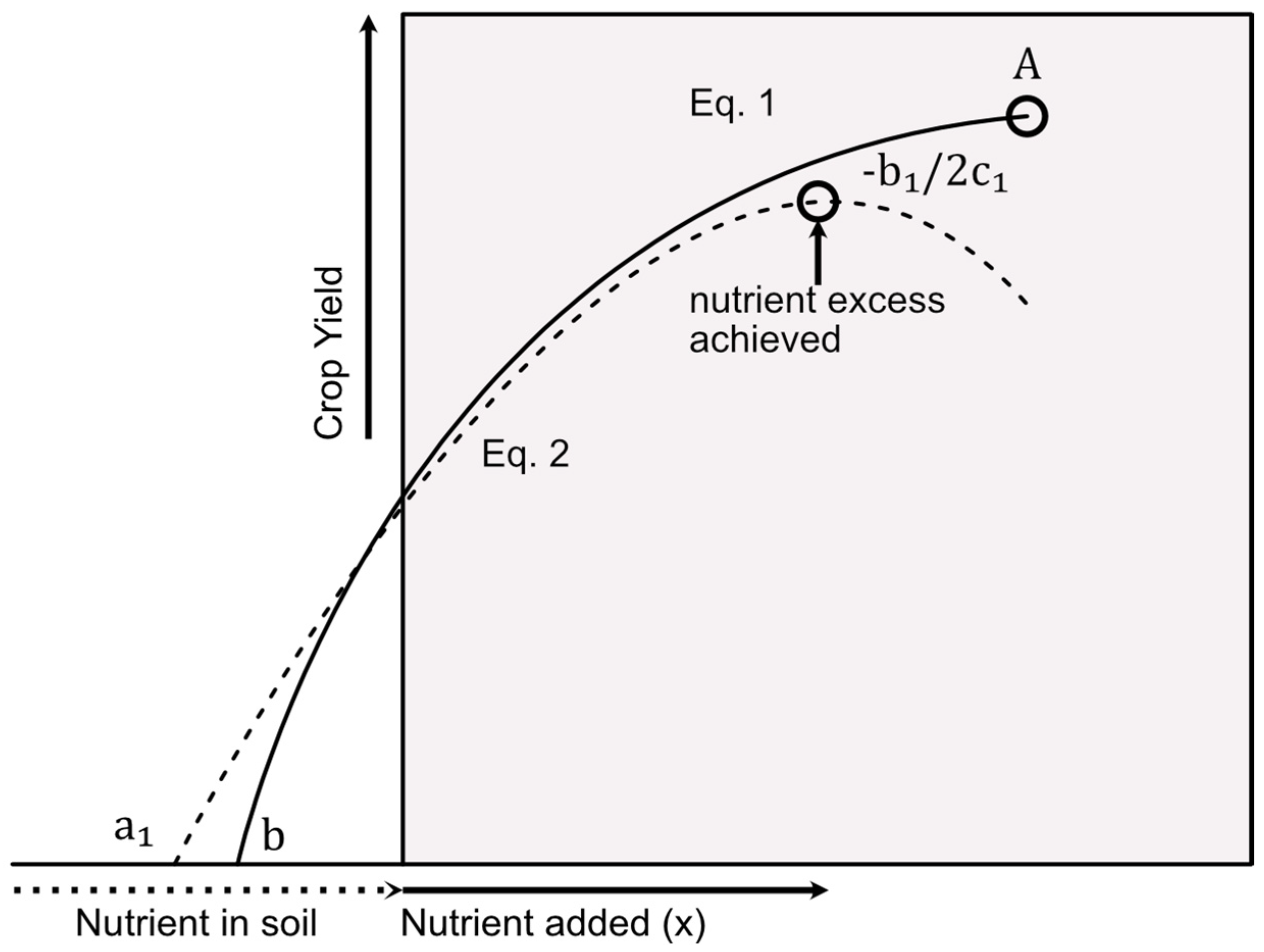
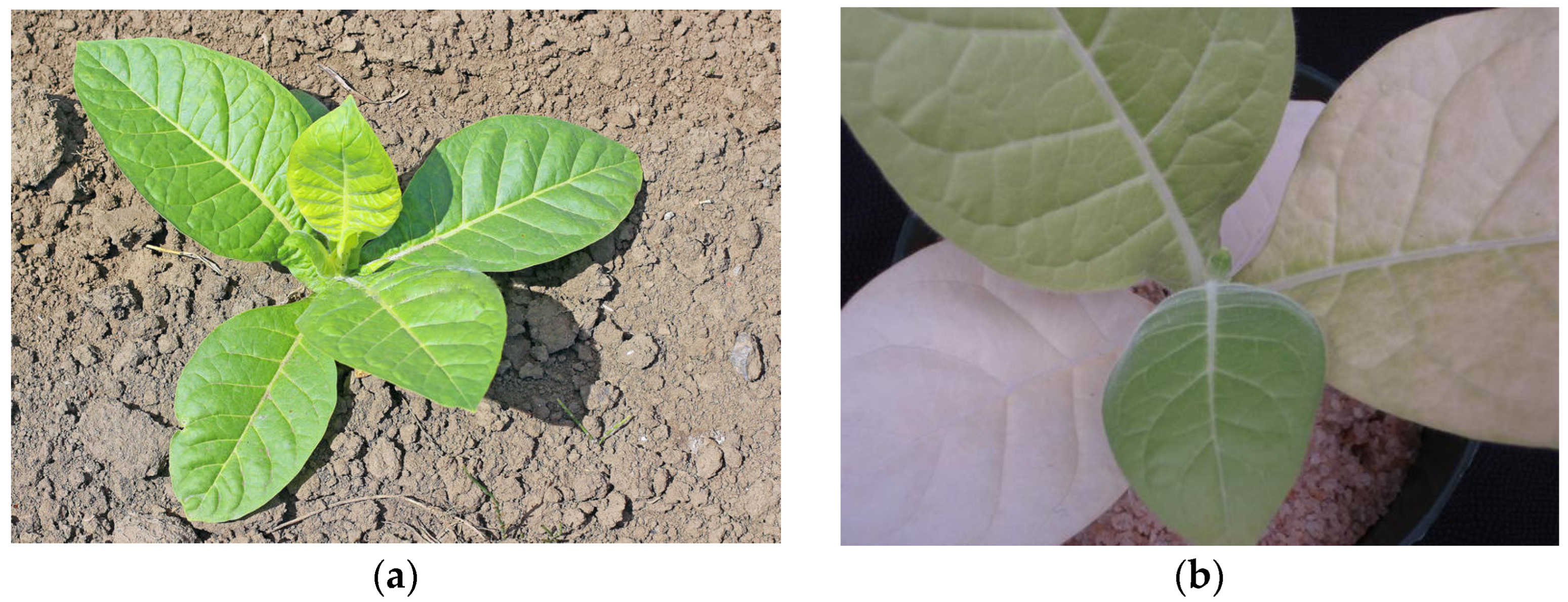
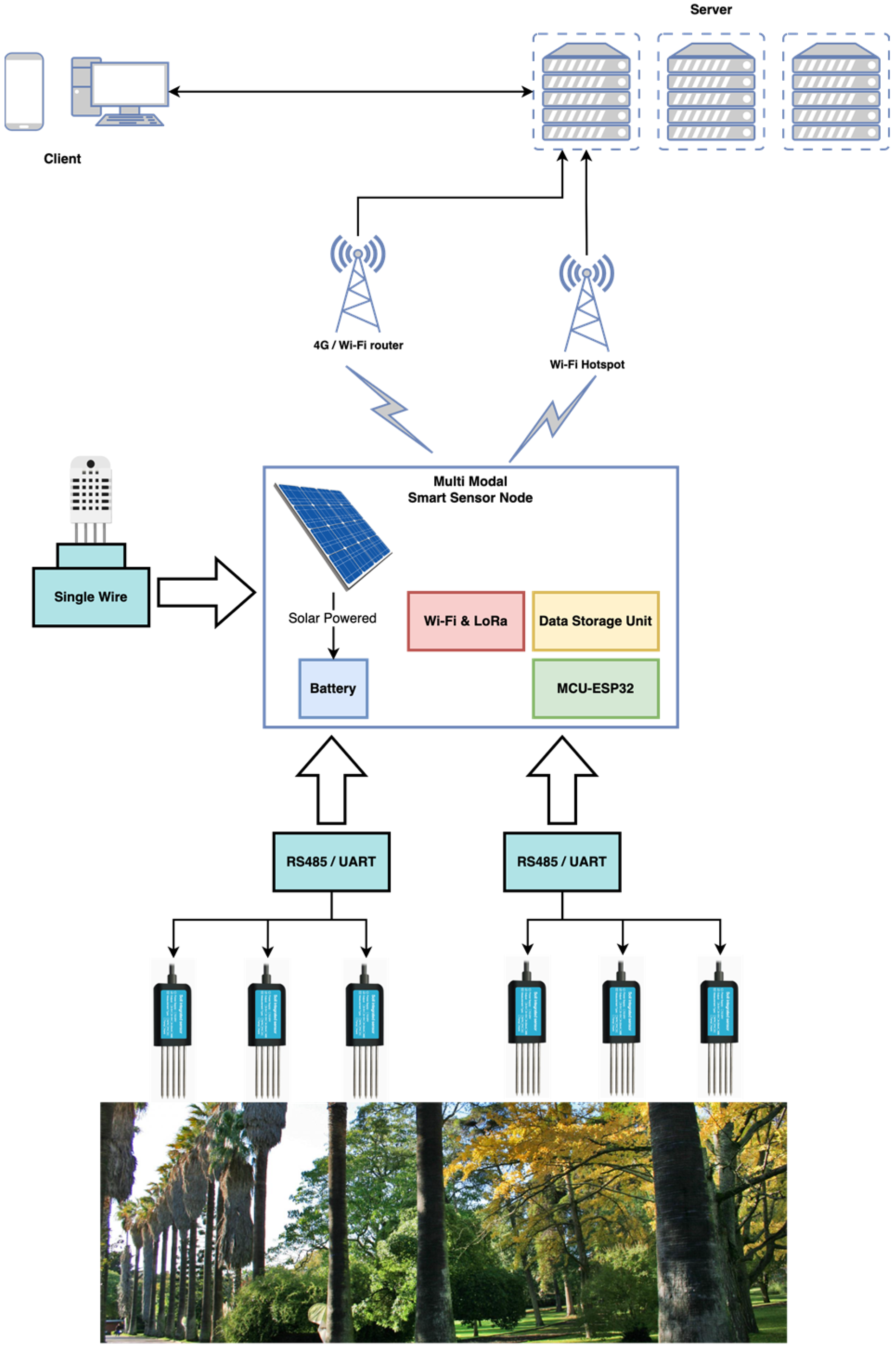
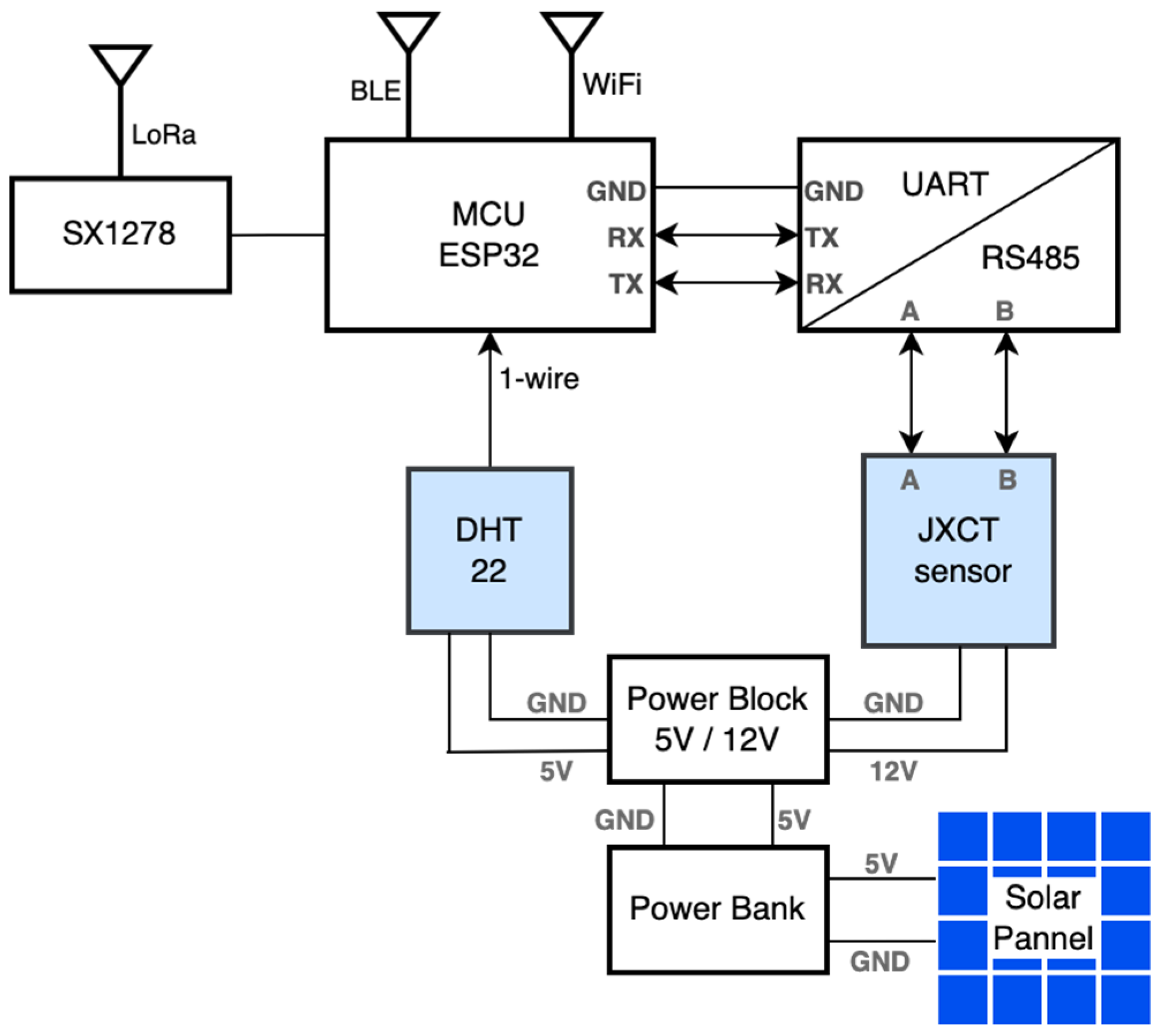

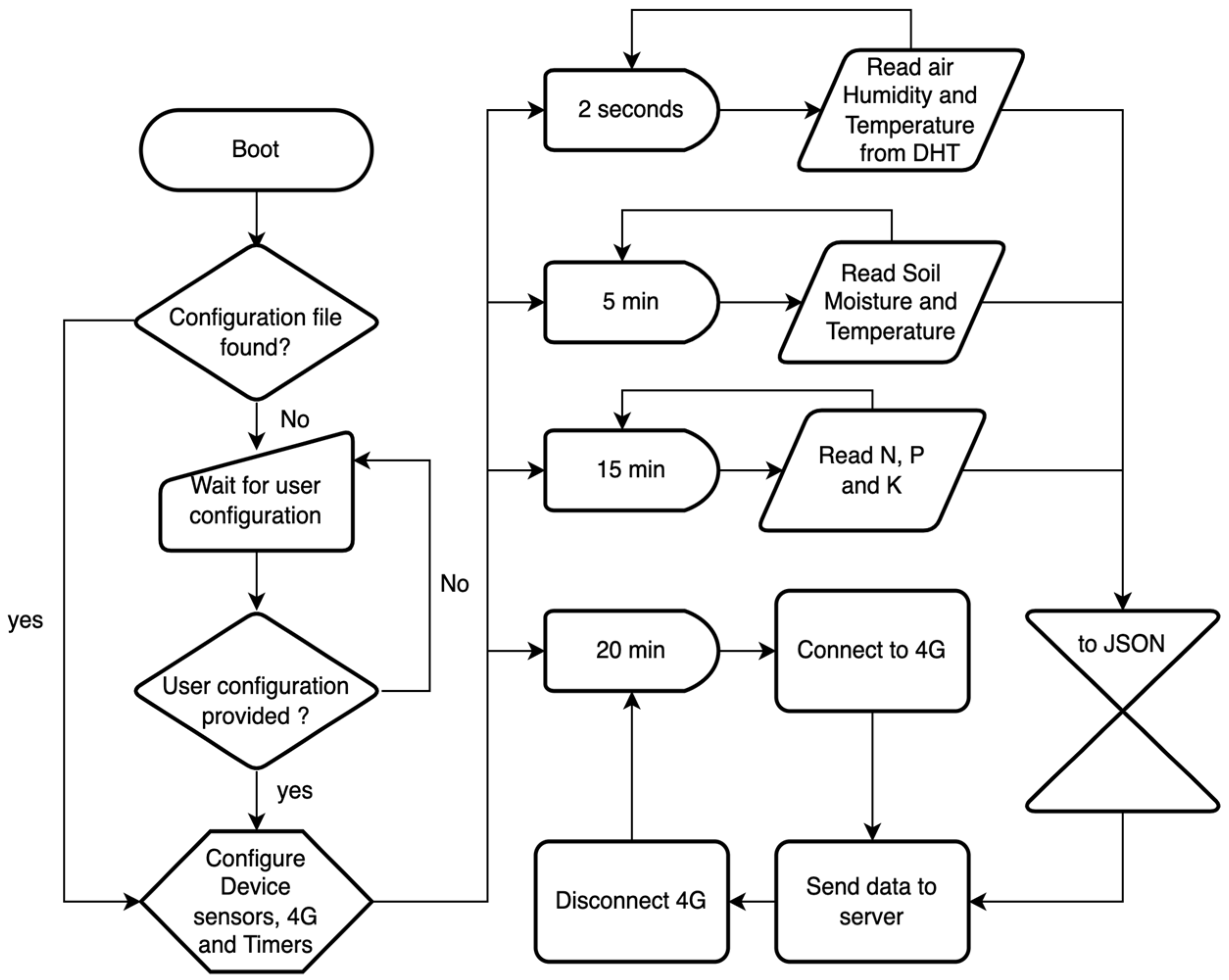
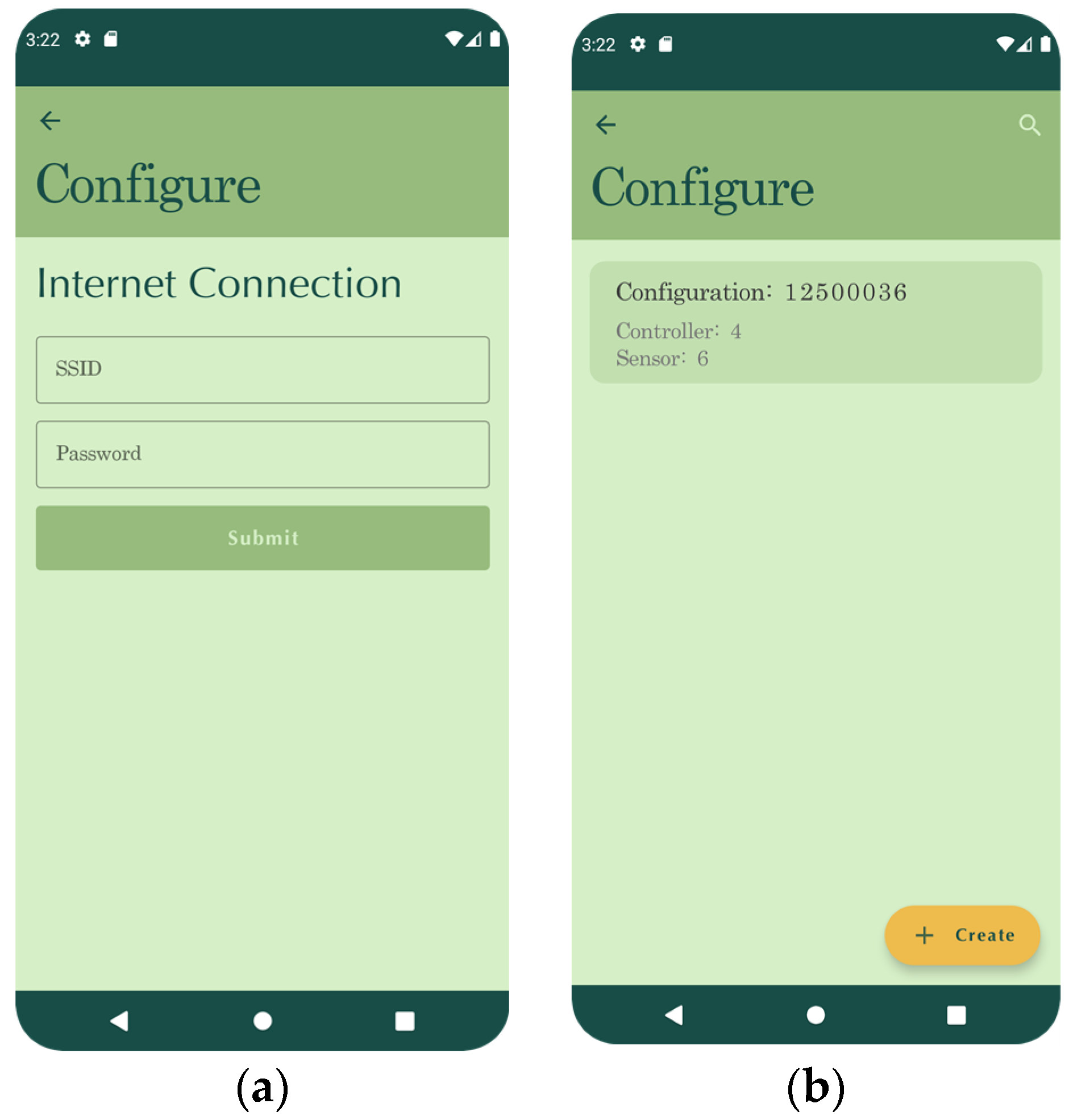

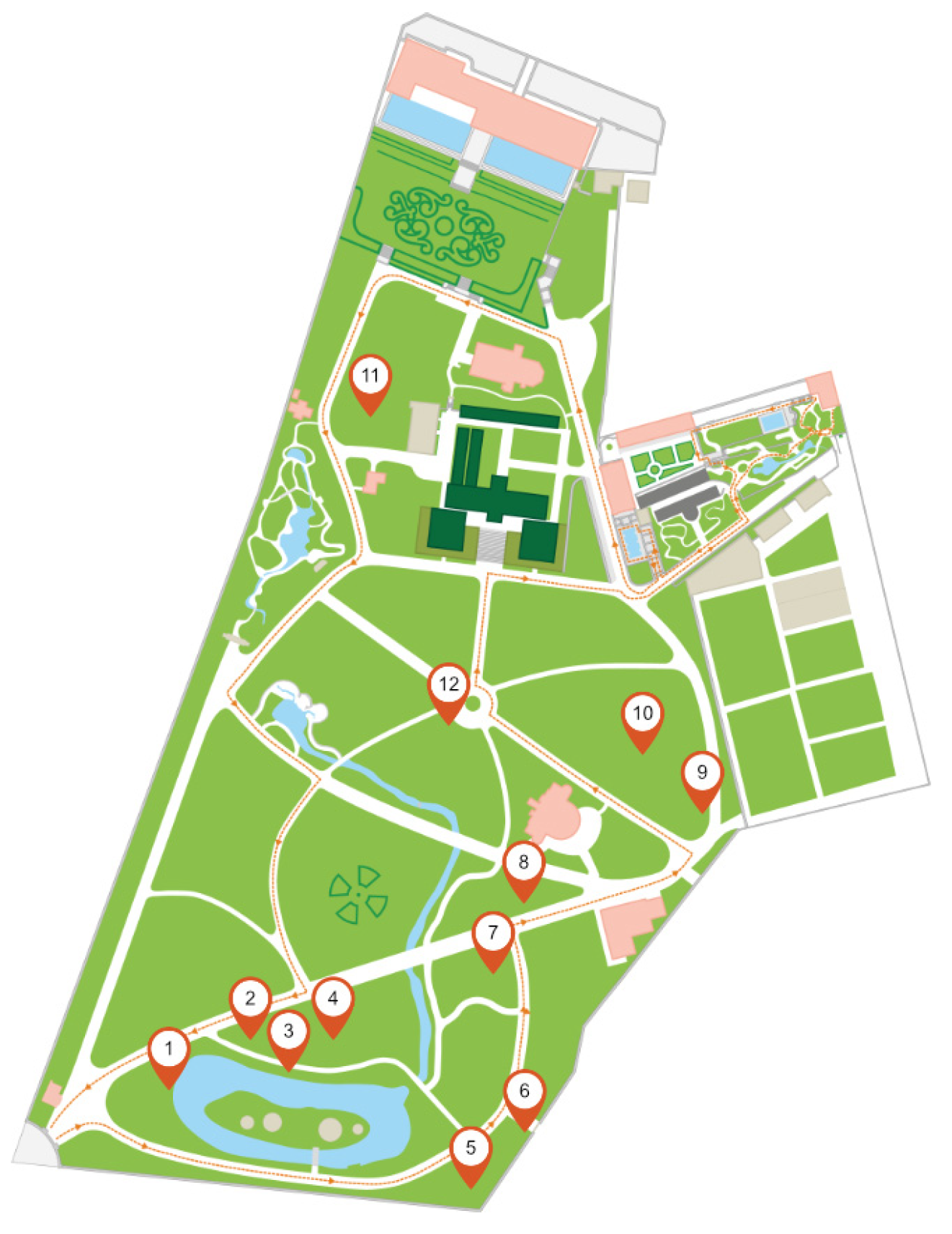


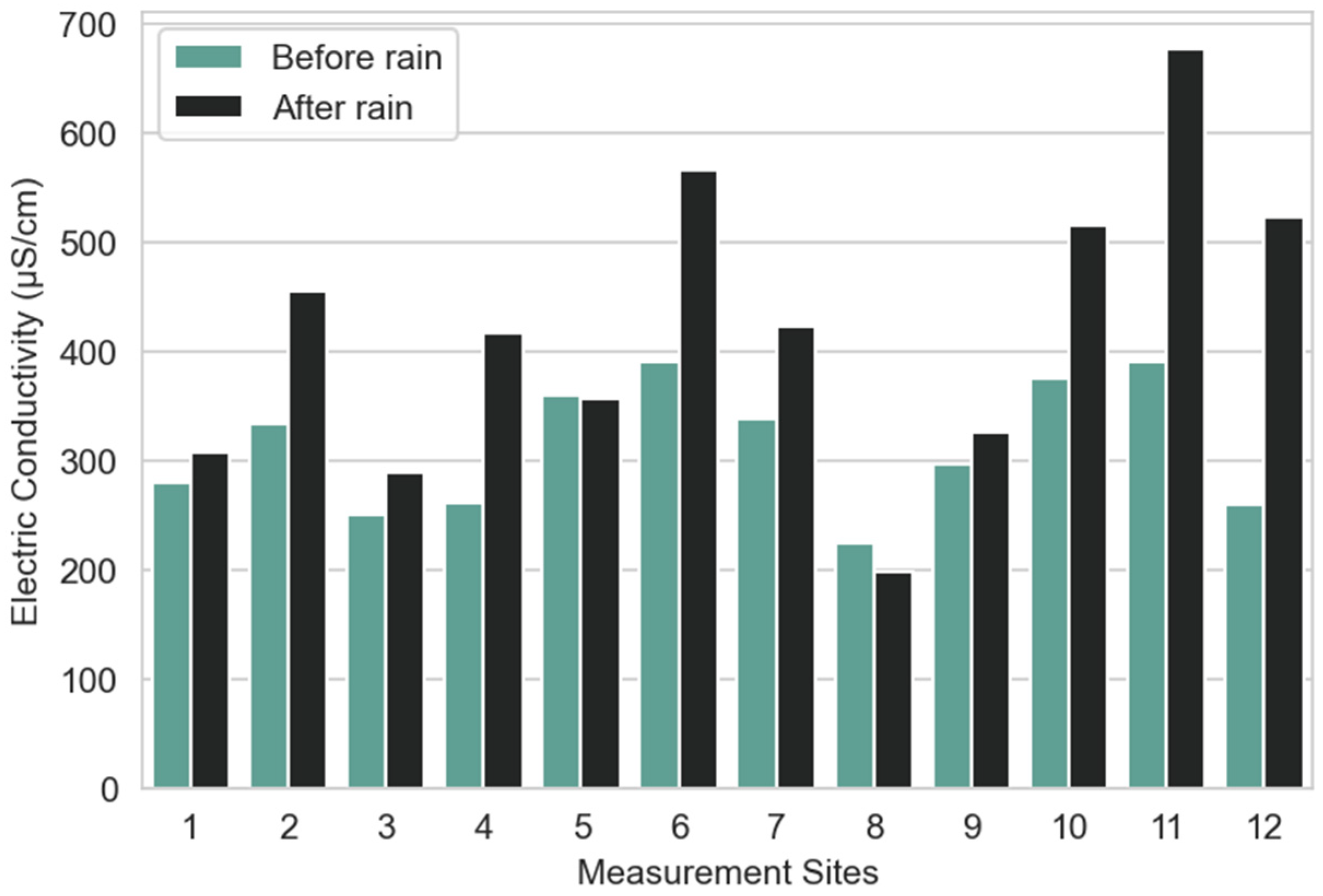
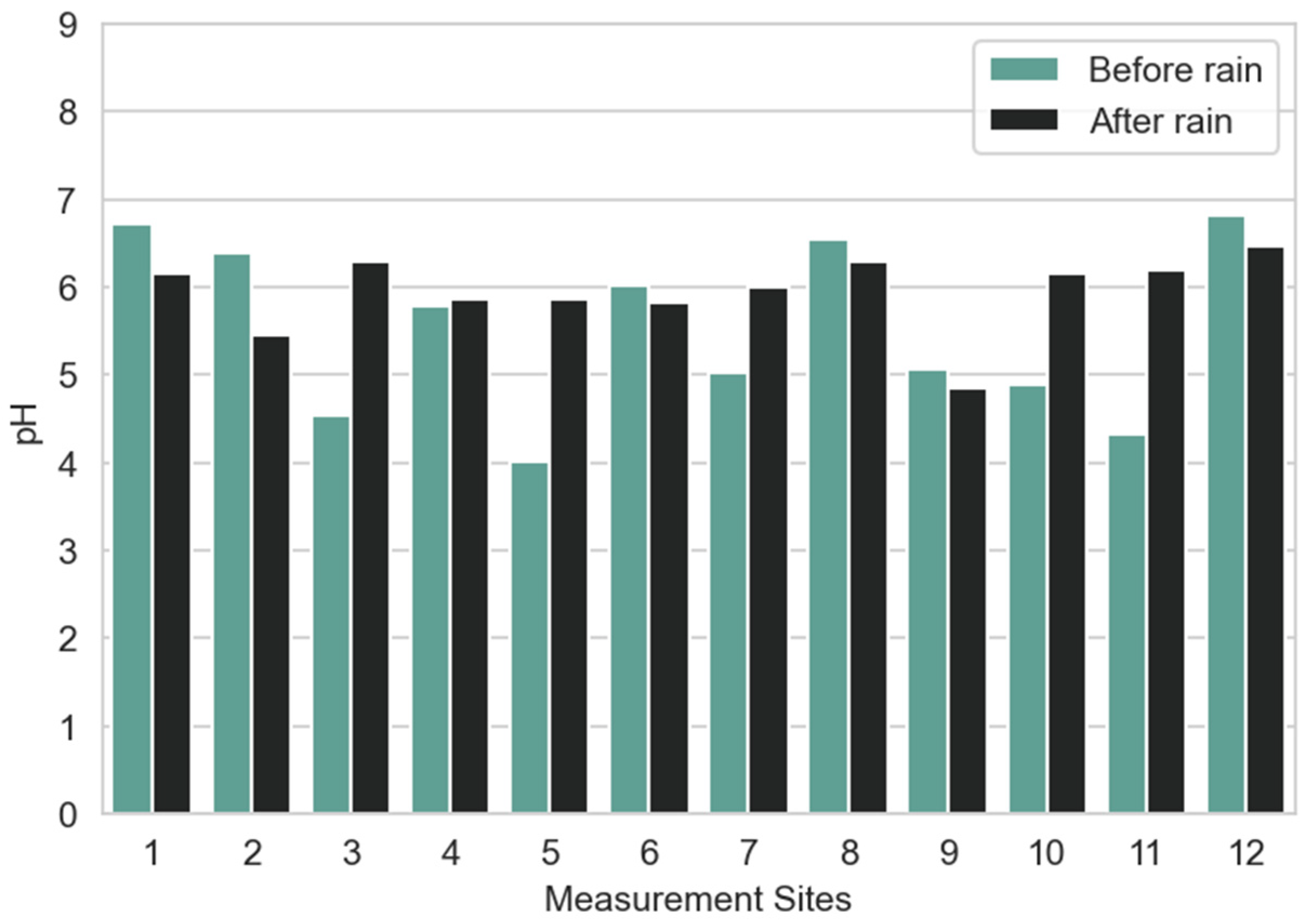



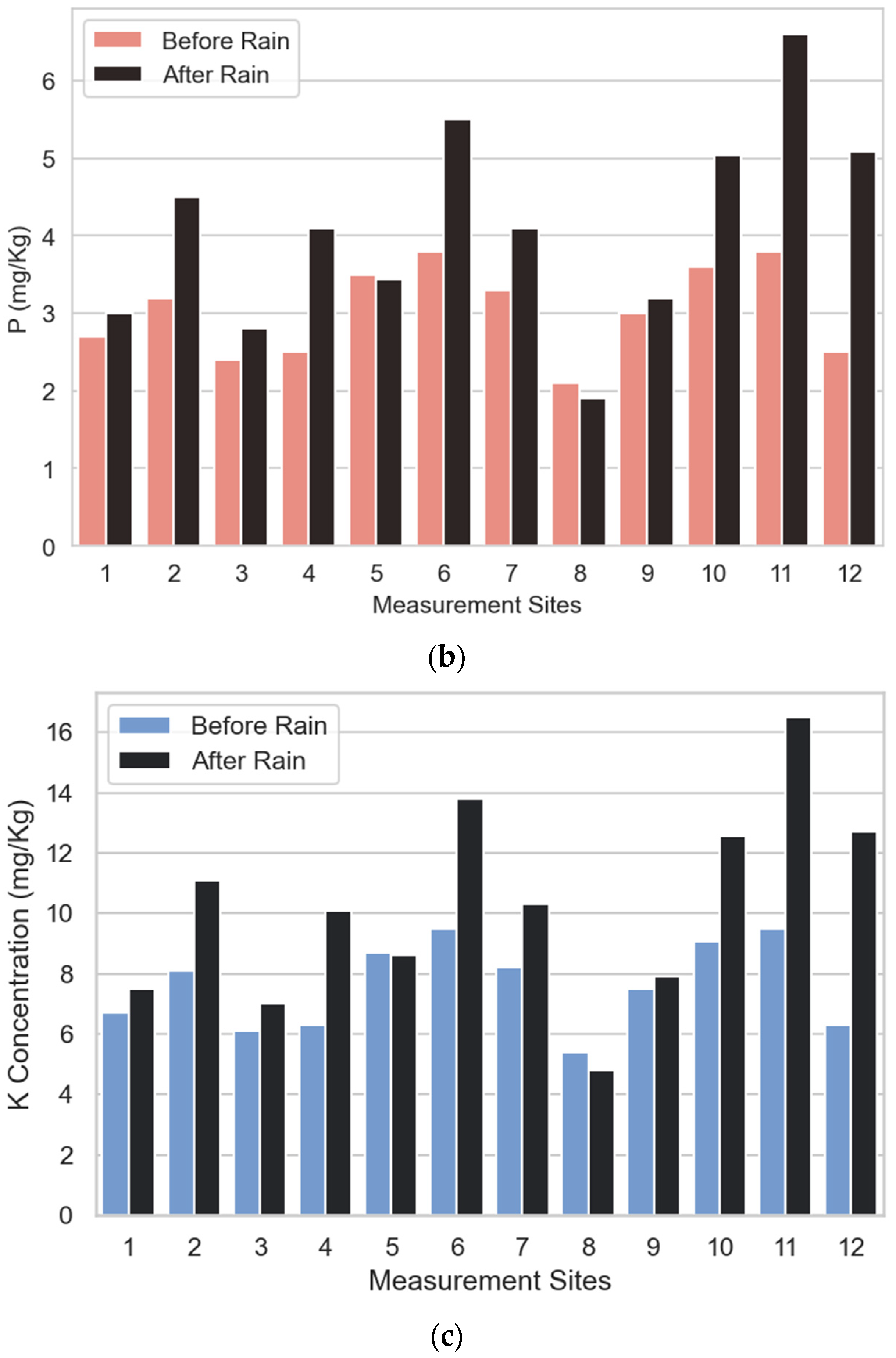

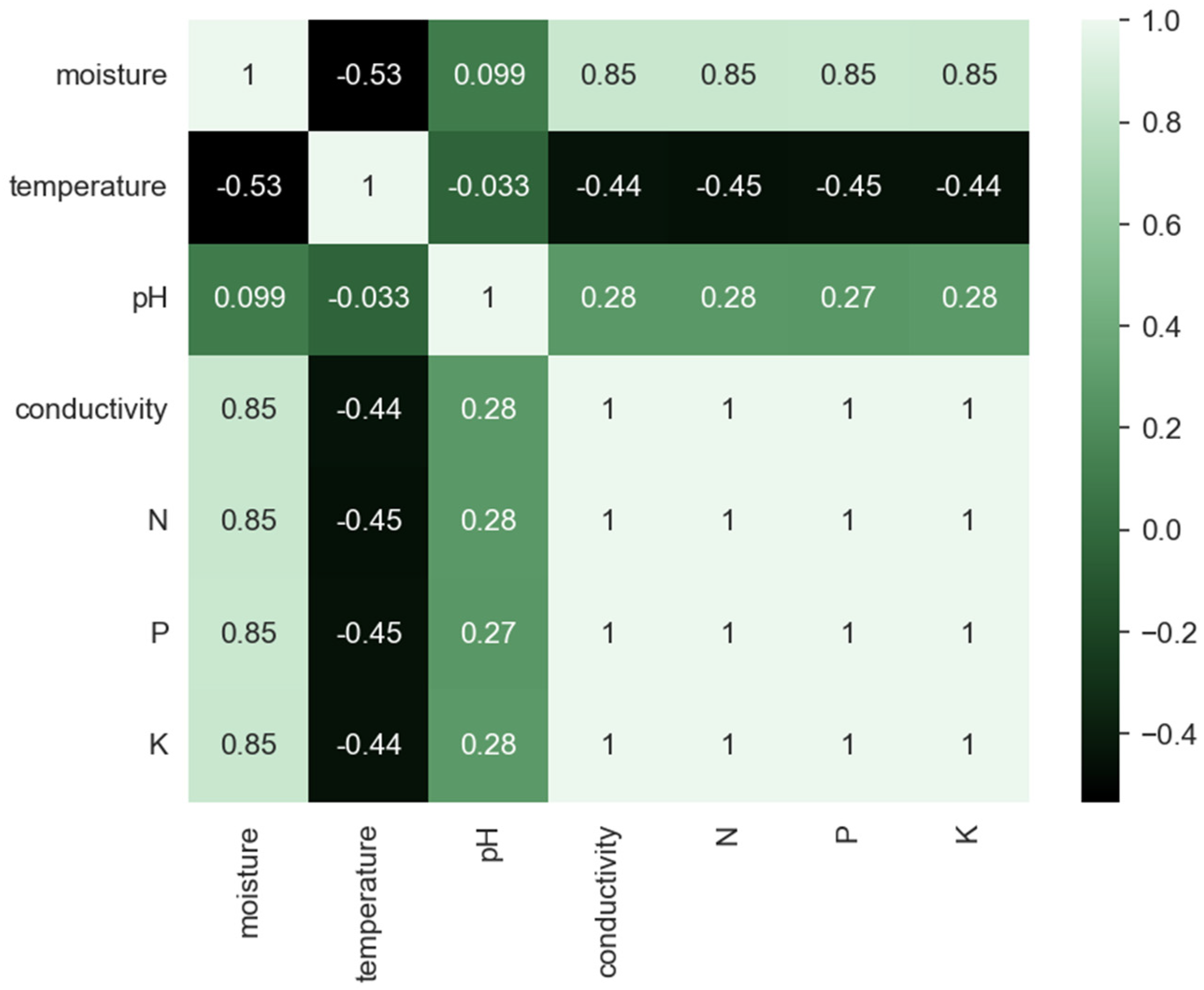
| Method | Type | Advantages | Disadvantages |
|---|---|---|---|
| Biological characterization | Qualitative | Easy to obtain data; may provide data on influence of external factors and spatial variability | May be affected by differences on evaluator perception and knowledge |
| Plant analysis | Qualitative or semi-quantitative | Fast, easy to obtain data | Changes are observed when it is too late. |
| Time consuming, some procedures are expensive | |||
| Chemical and physical characterization | Quantitative | Precise, efficient | Some portable sensors have lower sensibility, sensitivity, and accuracy than laboratory assessment |
| Essential Plant Elements | Beneficial Plant Elements | ||
|---|---|---|---|
| Organic Elements | Mineral Elements | Cobalt (Cb) | |
| Carbon (C) | Macronutrients | Micronutrients | Silicon (Si) |
| Hydrogen (H) | Primary | Boron (B) | Sodium (Na) |
| Oxygen (O) | Nitrogen (N) | Chlorine (Cl) | |
| Phosphorous (P) | Iron (Fe) | ||
| Potassium (K) | Manganese (Mn) | ||
| Secondary | Molybdenum (Mo) | ||
| Calcium (Ca) | Nickel (Ni) | ||
| Magnesium (Mg) | Zinc (Zn) | ||
| Sulfur (S) | |||
| Element | Chemical Symbol | Concentration (μmol g−1 DW) | Concentration (mg kg−1) |
|---|---|---|---|
| Nitrogen | N | 1.000 | 15,000 |
| Potassium | K | 250 | 10,000 |
| Calcium | Ca | 125 | 5000 |
| Magnesium | Mg | 80 | 2000 |
| Phosphorus | P | 60 | 2000 |
| Sulphur | S | 30 | 1000 |
| Chlorine | Cl | 3.0 | 100 |
| Boron | B | 2.0 | 20 |
| Iron | Fe | 2.0 | 100 |
| Manganese | Mn | 1.0 | 50 |
| Zinc | Zn | 0.3 | 20 |
| Copper | Cu | 0.1 | 6 |
| Nickel | Ni | 0.001 | 0.1 |
| Molybdenium | Mo | 0.001 | 0.1 |
| Soil Parameter | Measurements Range | Measurements Accuracy |
|---|---|---|
| Temperature | −40 °C–80 °C | ±0.4% of FS |
| Electric Conductivity | 0–20 mS cm−1 | ±2% of FS |
| Moisture content | 0–100% | ±2% of FS (0–50%) ±3% of FS (50–100%) |
| pH | 3–9 | ±5% of FS |
| N content | 1–1999 mg/Kg | ±2% of FS |
| P content | 1–1999 mg/Kg | ±2% of FS |
| K content | 1–1999 mg/Kg | ±2% of FS |
| Measurement Site | Species |
|---|---|
| 1 | Beaucarnea recurvata Lem. |
| 2 | Sequoia sempervirens (D. Don) Endl. |
| 3 | Encephalartos lebomboensis Verd. |
| 4 | Ficus macrophylla Pers. |
| 5 | Dracaena draco (L.) L. |
| 6 | Afrocarpus mannii (Hook.f.) C.N.Page |
| 7 | Araucaria bidwillii Hook. |
| 8 | Brahea edulis H.Wendl. ex S.Watson |
| 9 | Ceiba speciosa (A.St.-Hil.) Ravenna |
| 10 | Bauhinia variegata L. |
| 11 | Phytolacca dioica L. |
| 12 | Metrosideros excelsa Sol. ex Gaertn. |
Disclaimer/Publisher’s Note: The statements, opinions and data contained in all publications are solely those of the individual author(s) and contributor(s) and not of MDPI and/or the editor(s). MDPI and/or the editor(s) disclaim responsibility for any injury to people or property resulting from any ideas, methods, instructions or products referred to in the content. |
© 2022 by the authors. Licensee MDPI, Basel, Switzerland. This article is an open access article distributed under the terms and conditions of the Creative Commons Attribution (CC BY) license (https://creativecommons.org/licenses/by/4.0/).
Share and Cite
Postolache, S.; Sebastião, P.; Viegas, V.; Postolache, O.; Cercas, F. IoT-Based Systems for Soil Nutrients Assessment in Horticulture. Sensors 2023, 23, 403. https://doi.org/10.3390/s23010403
Postolache S, Sebastião P, Viegas V, Postolache O, Cercas F. IoT-Based Systems for Soil Nutrients Assessment in Horticulture. Sensors. 2023; 23(1):403. https://doi.org/10.3390/s23010403
Chicago/Turabian StylePostolache, Stefan, Pedro Sebastião, Vitor Viegas, Octavian Postolache, and Francisco Cercas. 2023. "IoT-Based Systems for Soil Nutrients Assessment in Horticulture" Sensors 23, no. 1: 403. https://doi.org/10.3390/s23010403
APA StylePostolache, S., Sebastião, P., Viegas, V., Postolache, O., & Cercas, F. (2023). IoT-Based Systems for Soil Nutrients Assessment in Horticulture. Sensors, 23(1), 403. https://doi.org/10.3390/s23010403









